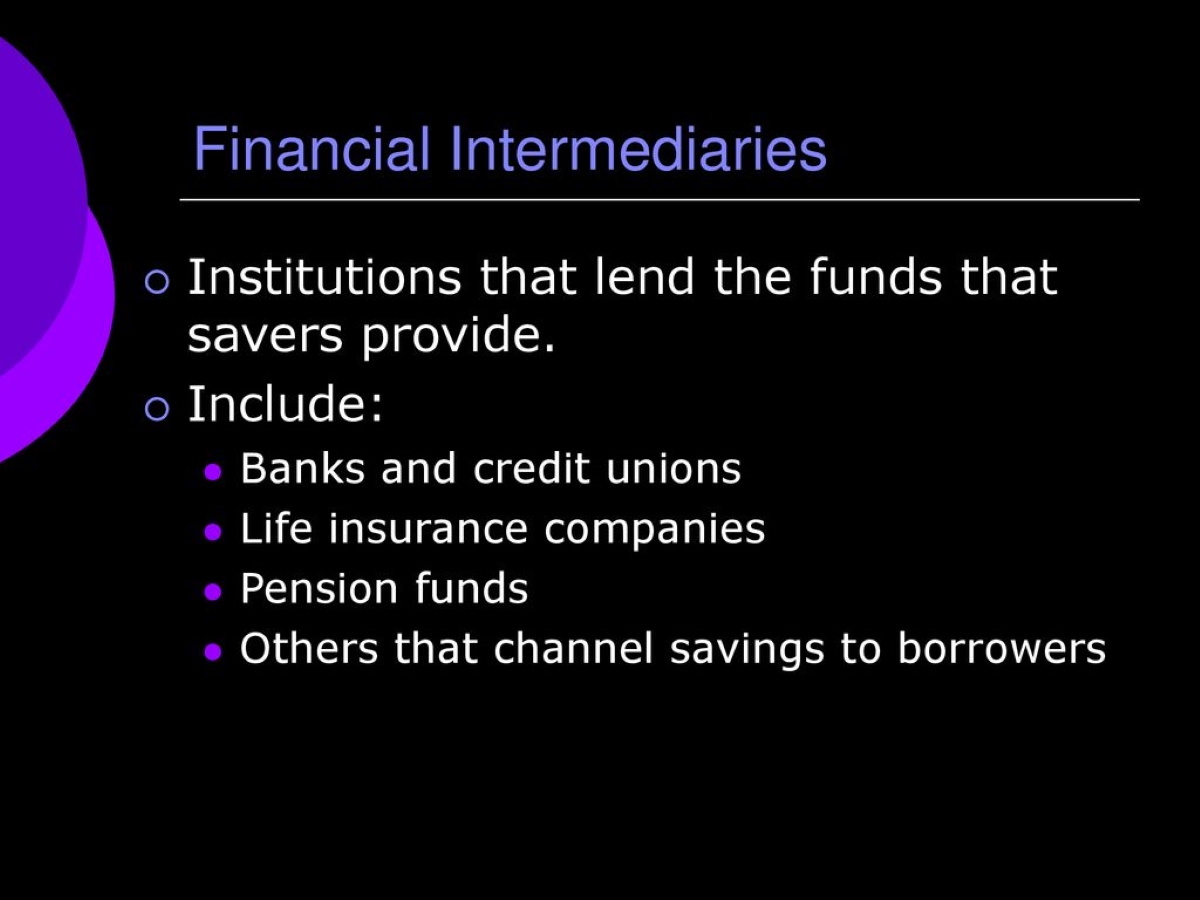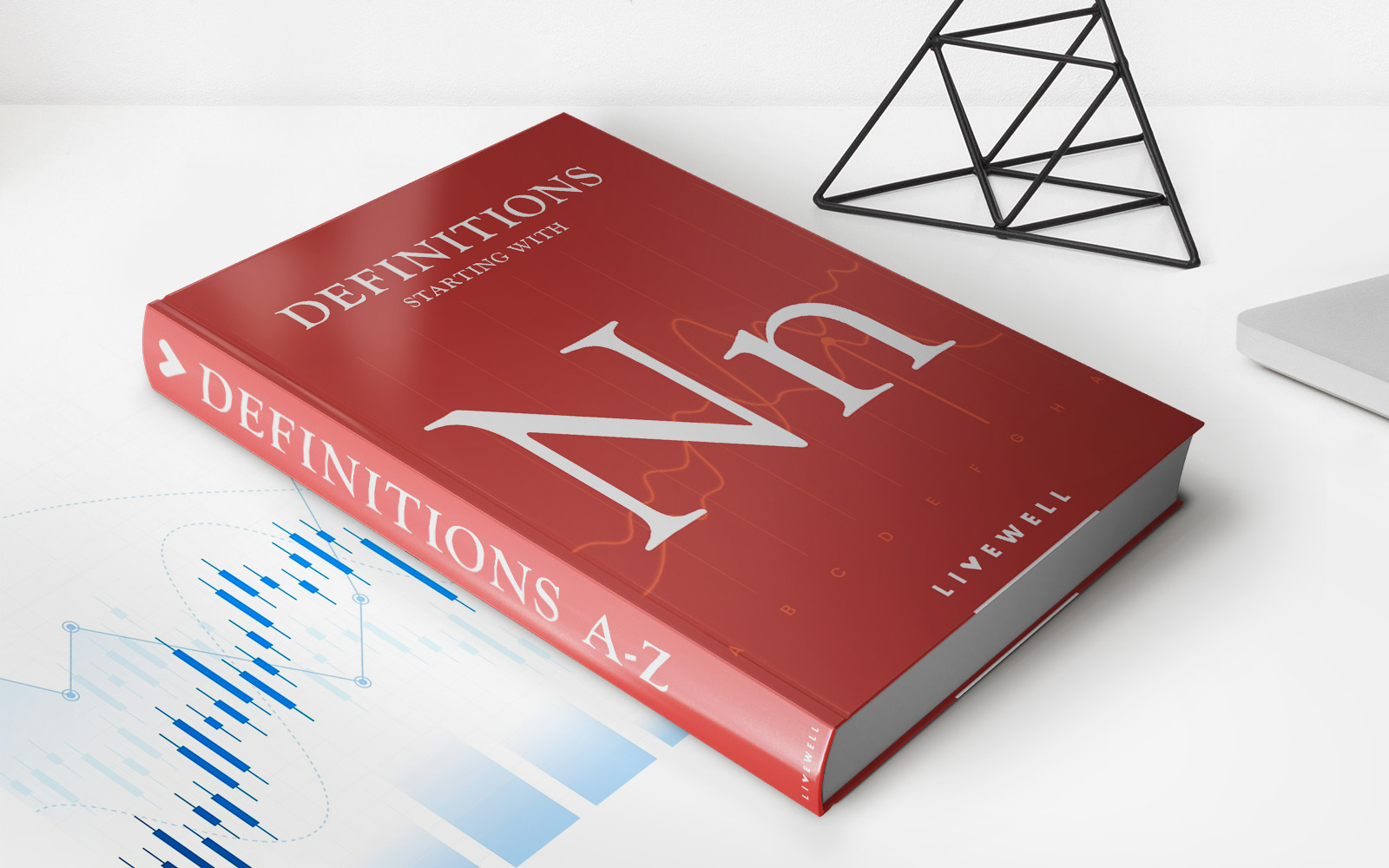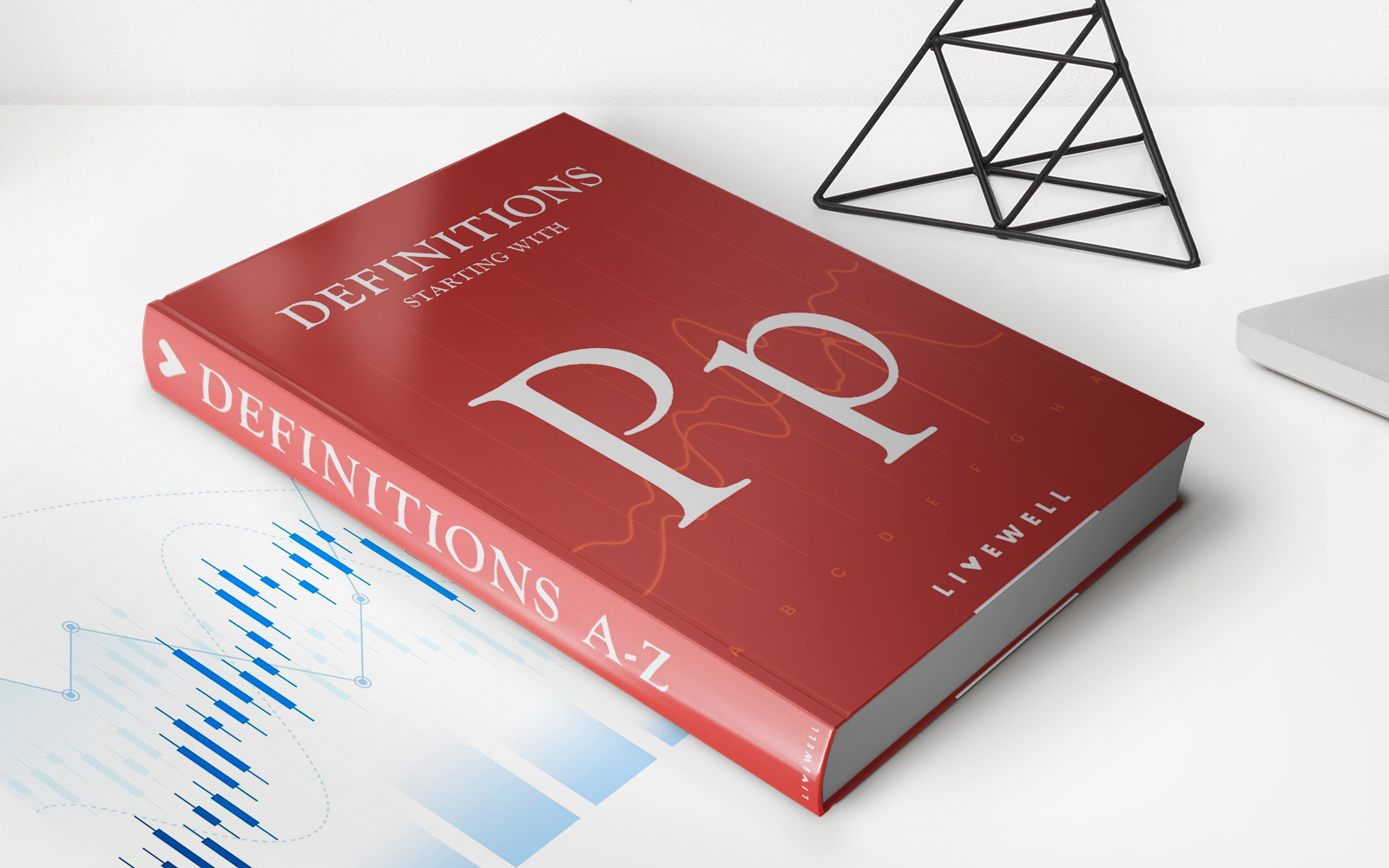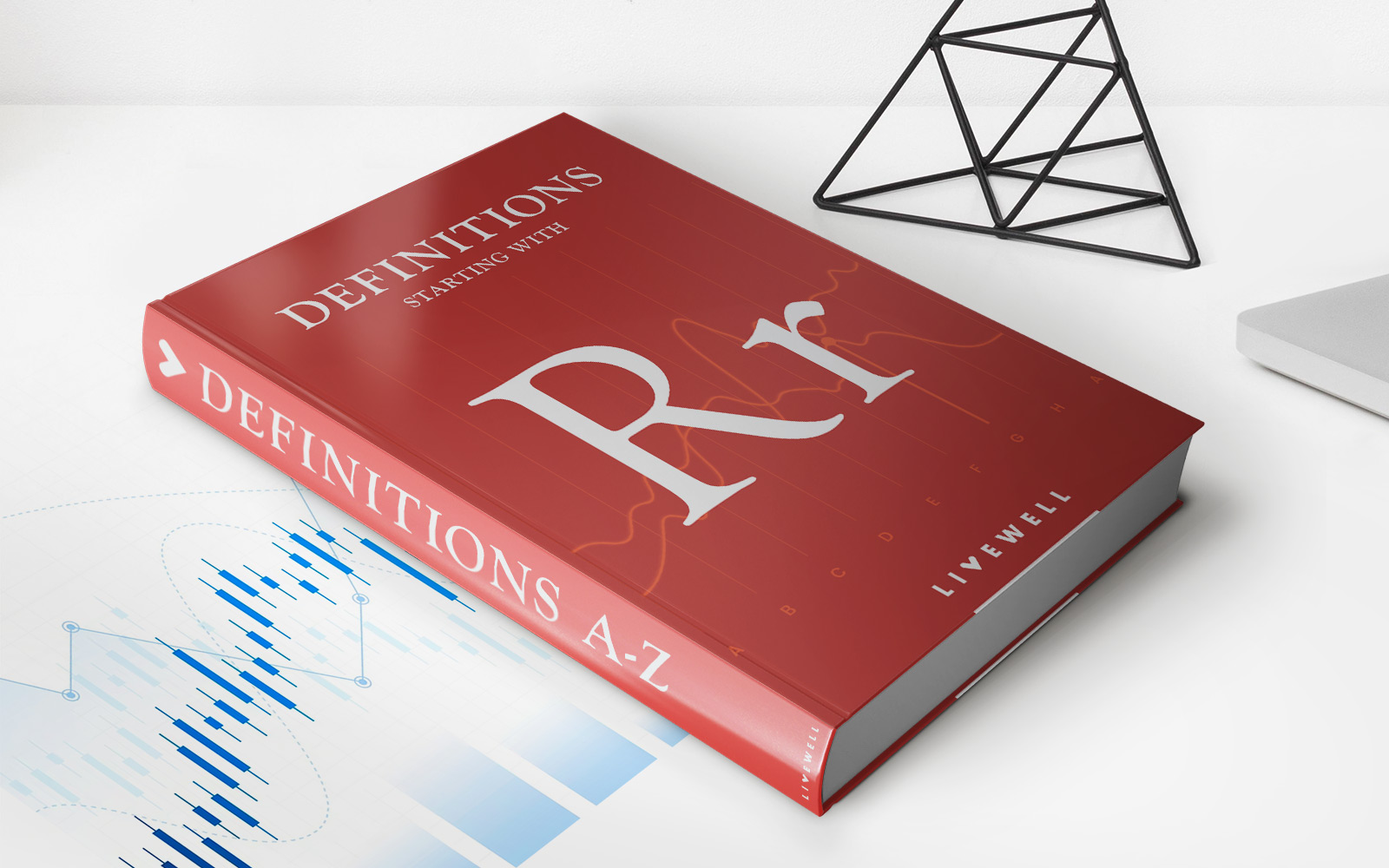

Finance
What Companies Offer Pension
Published: November 27, 2023
Looking for finance solutions that include pension options? Explore a variety of reputable companies that offer pension plans to help secure your future.
(Many of the links in this article redirect to a specific reviewed product. Your purchase of these products through affiliate links helps to generate commission for LiveWell, at no extra cost. Learn more)
Table of Contents
Introduction
A pension is a financial arrangement that provides individuals with a source of income during their retirement years. It is designed to help individuals maintain their standard of living and support their financial needs when they are no longer employed. Pensions are a critical aspect of overall financial planning, as they offer a secure and reliable income stream after retirement.
Understanding how pensions work and knowing what companies offer pension plans is essential for individuals who want to secure their financial future. This article will provide an overview of pensions, explain why they are crucial, and discuss the different types of pension plans available.
Having a pension ensures that retirees can meet their expenses, pay bills, and enjoy a comfortable retirement. It offers financial security and peace of mind, knowing that there is a steady income to rely on even after leaving the workforce.
As the cost of living continues to rise, pensions play a vital role in retirement planning. They are a valuable employee benefit that helps individuals maintain their lifestyle and covers the expenses that arise during retirement, including healthcare, housing, and daily living costs.
In recent years, the responsibility of retirement planning has shifted from the employers to the employees. Traditional pension plans, which guarantee a set monthly income, have become less common. Instead, many employers offer retirement savings plans, such as 401(k) or IRA accounts, where employees can contribute a portion of their salary, often with a matching contribution from the employer.
It’s essential to understand the various types of pension arrangements and the companies that offer them. This knowledge allows individuals to make informed decisions about their retirement savings and choose the plan that best suits their long-term financial goals and objectives.
In the following sections, we will delve into the different types of pensions, including government-provided and employer-sponsored plans, and explore companies that offer pension plans to their employees.
Understanding Pensions
A pension is a retirement savings plan that provides individuals with a regular income in retirement. It is typically funded through a combination of employer contributions, employee contributions, and investment returns. The purpose of a pension is to ensure that individuals have enough money to support themselves financially when they are no longer working.
One of the key features of a pension is that it provides a steady income stream throughout retirement. Unlike other forms of retirement savings, such as individual retirement accounts (IRAs) or 401(k) plans, which require individuals to manage their investments and make withdrawals, a pension provides a guaranteed income for life.
Pensions are typically offered by employers as part of a benefits package. The amount of income individuals receive from their pension depends on factors such as their salary, years of service, and the retirement age specified in the plan. Some plans may also provide additional benefits, such as cost-of-living adjustments to account for inflation.
It’s important to note that pensions are subject to government regulations and may vary depending on the country and jurisdiction. Each country has its own set of rules and requirements regarding pension eligibility, contribution limits, and retirement age.
Understanding how pensions work is crucial for individuals planning for retirement. It involves familiarizing oneself with the terms and provisions of the pension plan, such as vesting periods, contribution rates, and distribution options. It’s also important to consider factors such as inflation, investment returns, and longevity when estimating the income that will be generated from the pension.
In recent years, there has been a shift away from traditional pension plans, also known as defined benefit plans, towards defined contribution plans. Defined benefit plans guarantee a specific retirement income based on a formula, while defined contribution plans, such as 401(k)s, allow individuals to contribute a portion of their salary and make investment decisions. This shift has placed more responsibility on individuals to save and invest for retirement.
While pensions offer a valuable source of income in retirement, they should not be the sole component of one’s retirement strategy. It’s essential to have a diversified portfolio of savings and investments to ensure financial security during retirement. Consulting with a financial advisor can help individuals make informed decisions about their retirement planning and ensure that their long-term financial goals are met.
Why Pensions Are Important
Pensions play a crucial role in ensuring a secure and comfortable retirement for individuals. Here are some reasons why pensions are important:
- Income Stability: Pensions provide a reliable and consistent income stream throughout retirement. Unlike other retirement savings options that may be subject to market fluctuations, pensions offer a guaranteed source of income that individuals can depend on.
- Longevity Protection: With increasing life expectancy, retirees may spend several decades in retirement. Pensions help protect against the risk of running out of money during those retirement years. The certainty of regular pension payments can alleviate financial stress and provide peace of mind for retirees.
- Supporting Standard of Living: Pensions are designed to replace a portion of an individual’s pre-retirement income, allowing them to maintain their standard of living. This is especially important for retirees who may have higher medical expenses or other financial obligations during their retirement years.
- Social Security Supplement: For individuals who are eligible for Social Security benefits, pensions can act as a supplement, providing additional income to support a better quality of life in retirement.
- Employer Contribution: Many pension plans are employer-sponsored, with the employer contributing a portion of the retirement savings. This helps individuals build a substantial nest egg without solely relying on their own contributions, increasing the overall retirement savings.
- Tax Advantages: Pensions may offer tax benefits, such as tax-deferred contributions, meaning individuals can contribute to their pension plans with pre-tax income, thereby reducing their taxable income in the present and potentially saving on taxes.
By providing a stable income, protecting against longevity risk, maintaining standard of living, supplementing Social Security benefits, offering employer contributions, and providing tax advantages, pensions serve as a critical component of a well-rounded retirement strategy.
It is worth noting that while pensions used to be the primary retirement savings vehicle for many individuals, the landscape has evolved, and other retirement savings options, such as individual retirement accounts (IRAs) and 401(k) plans, have gained prominence. Nonetheless, pensions still hold their value and remain an essential part of retirement planning for many employees, particularly those with access to employer-sponsored plans.
Overall, pensions offer individuals financial security, peace of mind, and the ability to enjoy a fulfilling retirement without constant financial worry. They provide a foundation for a stable retirement and should be considered an integral component of a comprehensive retirement plan.
Types of Pensions
Pensions can take on various forms, offering different benefits and structures to individuals. Here are the three main types of pensions:
- Government-Provided Pension Plans: These are pensions provided by the government to ensure a basic level of retirement income for eligible individuals. In some countries, this may take the form of a public pension system, such as Social Security in the United States, where contributions are made through payroll taxes during a person’s working years and benefits are received during retirement. These government-provided pension plans aim to provide a safety net for retirees.
- Employer-Sponsored Pension Plans: These are pension plans offered by employers as part of their employee benefits package. There are two main types of employer-sponsored pension plans:
- Defined Benefit Plans: These plans guarantee a specific benefit amount based on factors such as salary, years of service, and a predetermined formula. The employer bears the investment risk and is responsible for funding the promised benefits. However, defined benefit plans have become less common in recent years due to the financial burdens they impose on employers.
- Defined Contribution Plans: These plans, such as 401(k)s in the United States, allow employees to contribute a portion of their salary towards their retirement savings. Employers often match a percentage of the employee’s contributions. The employee’s contributions and any investment returns determine the final retirement savings amount. Unlike defined benefit plans, the investment risk is shifted to the employee, who is responsible for managing their own retirement investments.
- Hybrid Pension Plans: Hybrid pension plans combine elements of both defined benefit and defined contribution plans. These plans provide a guaranteed benefit similar to a defined benefit plan but also offer a separate savings component, allowing employees to contribute and accumulate additional savings. One common example is the cash balance plan, where the employer contributes a set percentage of the employee’s salary and guarantees a minimum return on the accumulated savings.
Each type of pension plan offers its own advantages and considerations. The appropriate pension plan for an individual depends on their financial goals, risk tolerance, and employment circumstances.
Understanding the different types of pensions is crucial when planning for retirement. By evaluating the benefits and drawbacks of each type, individuals can make informed decisions about their pension investments and ensure they are taking full advantage of the retirement savings options available to them.
Government-Provided Pension Plans
Government-provided pension plans are designed to ensure a basic level of retirement income for eligible individuals. These plans are typically funded through payroll taxes or contributions made by employees and employers during a person’s working years.
One prominent example of a government-provided pension plan is Social Security in the United States. Social Security utilizes a pay-as-you-go system, where current workers’ payroll taxes fund the benefits received by current retirees. Eligibility for Social Security benefits is determined by factors such as age, work history, and contributions made into the system over one’s lifetime.
Government-provided pension plans aim to provide a safety net for retirees, ensuring they have a minimum level of financial support during their retirement years. These plans play a vital role in reducing poverty among elderly individuals and providing economic security.
While government-provided pension plans offer reliable income in retirement, it’s important to note that the benefits may not be sufficient to cover all living expenses. The level of benefits received from these plans is often based on a formula that takes into account factors such as earnings history and years of contributions.
In some countries, individuals may have the option to supplement government-provided pensions with additional private retirement savings plans to enhance their income during retirement. These private plans, such as individual retirement accounts (IRAs) or employer-sponsored 401(k) plans, allow individuals to save and invest additional funds on a tax-advantaged basis.
It’s crucial for individuals to familiarize themselves with the eligibility requirements, benefit calculations, and any limitations of government-provided pension plans in their respective countries. Understanding the intricacies of these plans can help individuals make informed decisions about their retirement savings strategies and ensure that they maximize the benefits available to them.
Ultimately, government-provided pension plans act as a financial safety net, providing a foundation of retirement income for individuals. However, it’s wise to supplement these plans with additional savings to meet specific retirement goals and maintain a comfortable standard of living in retirement.
Employer-Sponsored Pension Plans
Employer-sponsored pension plans are retirement savings plans offered by employers as part of their employee benefits package. These plans are designed to help employees save for retirement and provide them with a reliable source of income during their retirement years.
There are two main types of employer-sponsored pension plans:
- Defined Benefit Plans: Defined benefit plans, also known as traditional pension plans, offer a specified retirement benefit to employees based on factors such as salary, years of service, and a predetermined formula. The employer bears the investment risk and is responsible for funding the promised benefits. The benefit amount is usually based on a percentage of the employee’s average salary during their working years.
- Defined Contribution Plans: Defined contribution plans, such as 401(k) plans in the United States, allow employees to contribute a portion of their salary towards their retirement savings. These contributions are often tax-deferred, meaning they are not subject to income tax until withdrawn. Employers may also make matching contributions based on a percentage of the employee’s contributions. The final retirement savings amount is determined by the contributions made, investment returns, and fees associated with the plan.
Employer-sponsored pension plans offer several benefits to both employees and employers. For employees, these plans provide a convenient and structured way to save for retirement. They often offer tax advantages, such as tax-deferred contributions or tax-free withdrawals for Roth 401(k) plans. Additionally, many employers offer matching contributions, which effectively boost the employees’ retirement savings.
On the other hand, employers benefit from offering pension plans as part of their employee benefits package. These plans can help attract and retain top talent, as they are considered valuable perks. Furthermore, some employer contributions may be tax-deductible for the company.
Over the years, there has been a shift from defined benefit plans towards defined contribution plans. This shift has been driven by factors such as cost concerns and the desire for employees to have more control over their retirement savings. Defined contribution plans allow employees to make investment decisions based on their risk tolerance and financial goals.
It’s important for employees to take advantage of employer-sponsored pension plans to secure their financial future. By contributing to these plans regularly and taking advantage of any matching contributions offered by the employer, employees can build a substantial retirement nest egg. It’s also advisable for employees to review and adjust their investment allocations periodically to align with their changing circumstances and risk tolerance.
Overall, employer-sponsored pension plans serve as valuable tools in retirement planning, offering employees the opportunity to save for retirement while receiving additional contributions from their employers. It’s essential for individuals to understand their options, contribute consistently, and make informed decisions about their pension investments to ensure a financially secure retirement.
Traditional Defined Benefit Plans
Traditional defined benefit plans, often referred to as pension plans, are a type of employer-sponsored retirement plan that guarantees a specific retirement benefit to employees. These plans provide employees with a predetermined income amount during their retirement years, based on factors such as salary history, years of service, and a formula set by the plan.
In a defined benefit plan, the employer bears the investment risk and is responsible for funding the promised benefits. Contributions are made by the employer, and the funds are invested to generate returns over time. The employer assumes the responsibility of managing the investments and ensuring that there are enough assets in the plan to meet the future benefit obligations.
The main advantage of traditional defined benefit plans is that they offer a reliable and predictable source of retirement income. Employees can have peace of mind knowing that they will receive a specific monthly benefit, often based on a percentage of their average salary during their working years.
These plans are designed to provide a steady income stream throughout retirement, regardless of market conditions. Retirees receive regular payments for the rest of their lives, providing financial security and stability during their post-employment years.
One potential drawback of traditional defined benefit plans is that they require long-term commitment from employers. The employer must ensure that the plan remains well-funded, which may involve making adjustments to contributions or investment strategies over time.
In recent decades, there has been a decline in the prevalence of traditional defined benefit plans. The financial risks and costs associated with managing these plans have led many employers to shift towards defined contribution plans, such as 401(k) plans, where employees bear more responsibility for their retirement savings and investment decisions.
However, many large corporations, government entities, and unionized industries continue to offer traditional defined benefit plans as a valuable employee benefit. These plans provide retired employees with a stable and predictable income, allowing them to maintain their standard of living and meet their financial needs throughout retirement.
Understanding the features, benefits, and limitations of traditional defined benefit plans is essential for employees who have access to these plans. It’s crucial for individuals to review the details of their plan, including vesting periods, retirement age requirements, and benefit calculations, to make the most informed decisions regarding their retirement planning.
Consulting with a financial advisor can also be beneficial in evaluating the overall retirement strategy and determining whether additional savings or supplemental investments may be necessary to achieve financial goals alongside these traditional defined benefit plans.
Defined Contribution Plans
Defined contribution plans are a type of employer-sponsored retirement plan that allows employees to contribute a portion of their salary towards their retirement savings. These plans, such as 401(k)s in the United States, offer individuals more control over their retirement savings and investment decisions.
In a defined contribution plan, both the employee and employer may contribute to the retirement savings. Employee contributions are made on a pre-tax basis, meaning they are deducted from the employee’s salary before taxes are applied. Some plans also offer after-tax contribution options, such as Roth 401(k) plans, where the contributions are taxed upfront but qualified withdrawals are tax-free in retirement.
One of the significant advantages of defined contribution plans is the ability to receive matching contributions from the employer. Employers often offer a matching contribution up to a certain percentage of the employee’s salary. This employer match is essentially free money that helps individuals accelerate their retirement savings.
Another key feature of defined contribution plans is the investment component. Employees have the freedom to choose how their contributions are invested among a selection of investment options provided by the plan. These options typically include a range of mutual funds, target-date funds, and individual stocks or bonds. It is essential for individuals to diversify their investments and consider their risk tolerance and time horizon when making investment decisions.
While defined contribution plans offer more flexibility and control compared to traditional defined benefit plans, they do come with certain considerations and responsibilities for the employee. The ultimate retirement savings amount depends on various factors, including the contribution rate, investment performance, and fees associated with the plan.
Employees must regularly review and adjust their investment allocations to align with their changing circumstances and risk tolerance. As individuals approach retirement, it may be prudent to gradually shift investments towards more conservative options to protect accumulated savings.
One significant advantage of defined contribution plans is portability. If an employee changes jobs, they can typically roll over their retirement savings into an individual retirement account (IRA) or another defined contribution plan offered by their new employer. This allows individuals to maintain tax-advantaged savings and continue building their retirement nest egg.
Defined contribution plans have become increasingly prevalent in recent years, offering employees an opportunity to accumulate savings for retirement and potentially benefit from employer contributions and tax advantages. However, it’s important for individuals to actively participate, contribute consistently, and take advantage of any employer matches to maximize the potential growth of their retirement savings.
Understanding the details and features of the defined contribution plan offered by an employer is crucial for employees. This knowledge allows individuals to make well-informed decisions regarding their contributions, investment allocations, and overall retirement savings strategy.
Hybrid Pension Plans
Hybrid pension plans are retirement savings vehicles that combine elements of both defined benefit and defined contribution plans. These plans aim to provide employees with the features and benefits of both types of plans, offering a degree of flexibility and security.
One example of a hybrid pension plan is a cash balance plan. In a cash balance plan, the employer contributes a set percentage of the employee’s salary into an individual account, similar to a defined contribution plan. The account receives a minimum guaranteed return, often tied to a specified interest rate or indexed to an investment benchmark. This guaranteed return helps ensure the growth of the account balance over time.
Although the cash balance plan functions like a defined contribution plan in terms of individual account accumulation, it also provides a defined benefit component. Upon retirement, the employee can choose to receive their account balance as a lump sum or convert it into an annuity, which provides a lifetime stream of income similar to a defined benefit plan.
Hybrid pension plans provide several benefits to employees. The combination of a guaranteed minimum return and the ability to accumulate individual account balances gives employees a measure of security while allowing for potential growth. These plans also offer more portability than traditional defined benefit plans, as employees can often roll over their individual account balance into an IRA or another retirement plan if they leave the job.
For employers, hybrid pension plans offer a balance between the higher costs and risks of traditional defined benefit plans and the desire to shift some responsibility and investment risks to employees seen in defined contribution plans. Employers can provide retirement benefits to their employees while managing and budgeting for the plan more effectively.
Hybrid pension plans have gained popularity in industries such as education, healthcare, and government, where the employer values the benefits of both defined benefit and defined contribution plans. These plans offer employees the opportunity to accumulate retirement savings while still providing a measure of income stability in retirement.
As with any retirement plan, it is essential for employees to understand the features, benefits, and potential drawbacks of hybrid pension plans. Employees should review the plan documents, seek clarification from their employers, and consider consulting with a financial advisor to ensure they are making informed decisions about their retirement savings and maximizing the benefits provided by their hybrid pension plan.
Hybrid pension plans offer a middle ground between traditional defined benefit and defined contribution plans, providing employees with a balance of security, flexibility, and potential growth. By taking advantage of these plans and contributing consistently, individuals can build a robust retirement nest egg and secure their financial future.
Choosing the Right Pension Plan
Choosing the right pension plan is an important decision that individuals need to make to secure their financial future in retirement. Several factors should be considered when selecting a pension plan that aligns with individual goals, preferences, and circumstances.
Employment Situation: Consider whether your employer offers a pension plan and the specific details of the plan. Understand whether it is a defined benefit plan, a defined contribution plan, or a hybrid plan. Assess the employer’s contribution and match, if applicable.
Retirement Goals and Time Horizon: Evaluate your retirement goals and the expected timeline for retirement. Consider factors such as desired lifestyle, anticipated expenses, and potential healthcare costs. A longer time horizon may provide more opportunity for growth in a defined contribution plan, while a defined benefit plan may offer more income security in retirement.
Risk Tolerance and Investment Options: Assess your risk tolerance and comfort level with investment decisions. Defined benefit plans typically have predetermined investment strategies managed by the employer. In contrast, defined contribution plans offer individual control over investment options, enabling employees to choose among a variety of funds or stocks. Consider whether you prefer the ease of a predefined investment strategy or the flexibility and responsibility of self-directed investments.
Portability and Flexibility: Examine the portability options of the pension plans available to you. Assess whether you can transfer or roll over your pension funds to a new employer’s plan or an individual retirement account (IRA) if you change jobs. Portability and flexibility are essential if you anticipate changing jobs or value the ability to have control over your retirement savings.
Tax Considerations: Understand the tax implications of the pension plan options available to you. Some plans offer tax-deferred contributions, allowing you to contribute funds before paying taxes, while others may provide tax-free distributions if certain conditions are met. Consider consulting with a tax advisor to understand the potential tax advantages and consequences of different pension plans.
Seek Professional Guidance: It can be beneficial to consult with a financial advisor or retirement specialist who can guide you through the process of choosing the right pension plan. They can help analyze your financial situation, provide insights into the different plan options, and offer personalized recommendations based on your unique circumstances.
Ultimately, the right pension plan will depend on your specific needs and preferences. It may involve a combination of pension plans, individual retirement accounts, or other retirement savings vehicles to achieve your desired financial security and retirement goals. By carefully considering these factors and seeking professional guidance when needed, you can make an informed decision and select a pension plan that best suits your long-term financial objectives.
Companies that Offer Pension Plans
While the prevalence of traditional pension plans has declined in recent years, several companies still offer pension plans as part of their employee benefits package. These plans are designed to provide employees with a reliable source of income during their retirement years. Here are some notable companies that offer pension plans:
- IBM: IBM is known for its pension plan, which provides eligible employees with a defined benefit plan. The plan offers a guaranteed income stream based on an employee’s years of service and final average pay.
- Boeing: Boeing offers pension plans to its employees, allowing them to secure a stable retirement income. The plan is a defined benefit plan that provides benefits based on a formula considering an employee’s years of service and average salary during their career.
- General Electric: General Electric has a long-standing pension plan for its employees. The plan offers a defined benefit, whereby employees receive a predetermined monthly income in retirement based on factors such as years of service and compensation history.
- Verizon Communications: Verizon Communications provides its employees with a pension plan that guarantees retirement income. The plan offers a defined benefit, ensuring employees receive a specified monthly payment during their retirement years.
- Ford Motor Company: Ford Motor Company offers pension plans as part of its employee benefits package. The plans are defined benefit plans, providing retirees with a consistent income stream based on years of service and salary history.
These are just a few examples of companies that offer pension plans. Many other large corporations, including those in the manufacturing, utilities, and financial sectors, provide pension benefits to their employees.
It’s important to note that pension plan availability may vary depending on the specific role, level, and location within a company. Some companies may offer pension plans to certain employee groups, while others may have transitioned to defined contribution plans as their primary retirement savings option.
When considering potential employers, individuals should carefully evaluate the retirement benefits offered, including pension plans, in addition to other factors such as salary, work-life balance, and corporate culture. Understanding the pension options available and the potential impact on future financial security is essential in making informed career decisions.
As the retirement landscape continues to evolve, employees may find that some companies are transitioning away from traditional pensions and offering defined contribution plans, such as 401(k) plans, or similar retirement savings options. It’s advisable to review the retirement benefits offered by each company and consider how they align with long-term financial goals and retirement income needs.
Consulting with a financial advisor can provide valuable guidance in navigating retirement benefits and making informed decisions about pension plans. They can help assess the overall retirement strategy, evaluate pension benefits from potential employers, and ensure individuals are on track for a financially secure retirement.
Conclusion
Pensions are an integral component of a successful retirement plan, providing individuals with secure and reliable income during their post-employment years. Understanding how pensions work, the different types available, and the companies that offer pension plans is essential for individuals looking to secure their financial future.
Government-provided pension plans, such as Social Security, offer a foundational level of retirement income, while employer-sponsored pension plans, including defined benefit and defined contribution plans, provide additional opportunities for saving and investment growth.
Traditional defined benefit plans guarantee a specific retirement income based on factors such as salary and years of service, while defined contribution plans offer individuals more control over their retirement savings and investment decisions. Hybrid pension plans combine elements of both types, providing a balance between income security and flexibility.
When selecting a pension plan, individuals should consider their employment situation, retirement goals and time horizon, risk tolerance, portability options, and tax considerations. Seeking professional guidance from a financial advisor or retirement specialist can help individuals make informed decisions based on their unique circumstances.
Several notable companies, including IBM, Boeing, General Electric, Verizon Communications, and Ford Motor Company, offer pension plans as part of their employee benefits package. It’s important to be aware that the availability of pension plans may vary depending on the specific role, level, and location within a company.
In conclusion, pensions offer individuals a stable and predictable source of income in retirement, allowing them to maintain their standard of living and enjoy a financially secure future. By understanding the different types of pensions, considering personal circumstances, and making informed choices, individuals can optimize their retirement savings and pave the way for a comfortable and fulfilling retirement.














